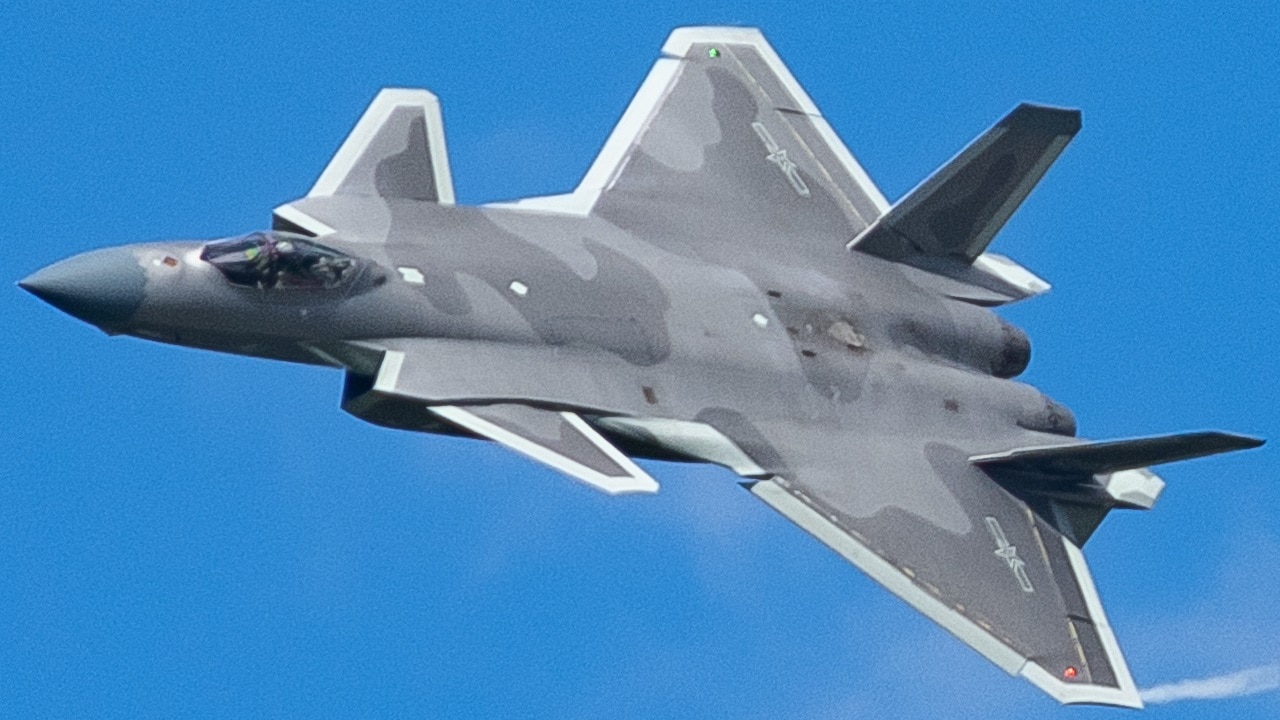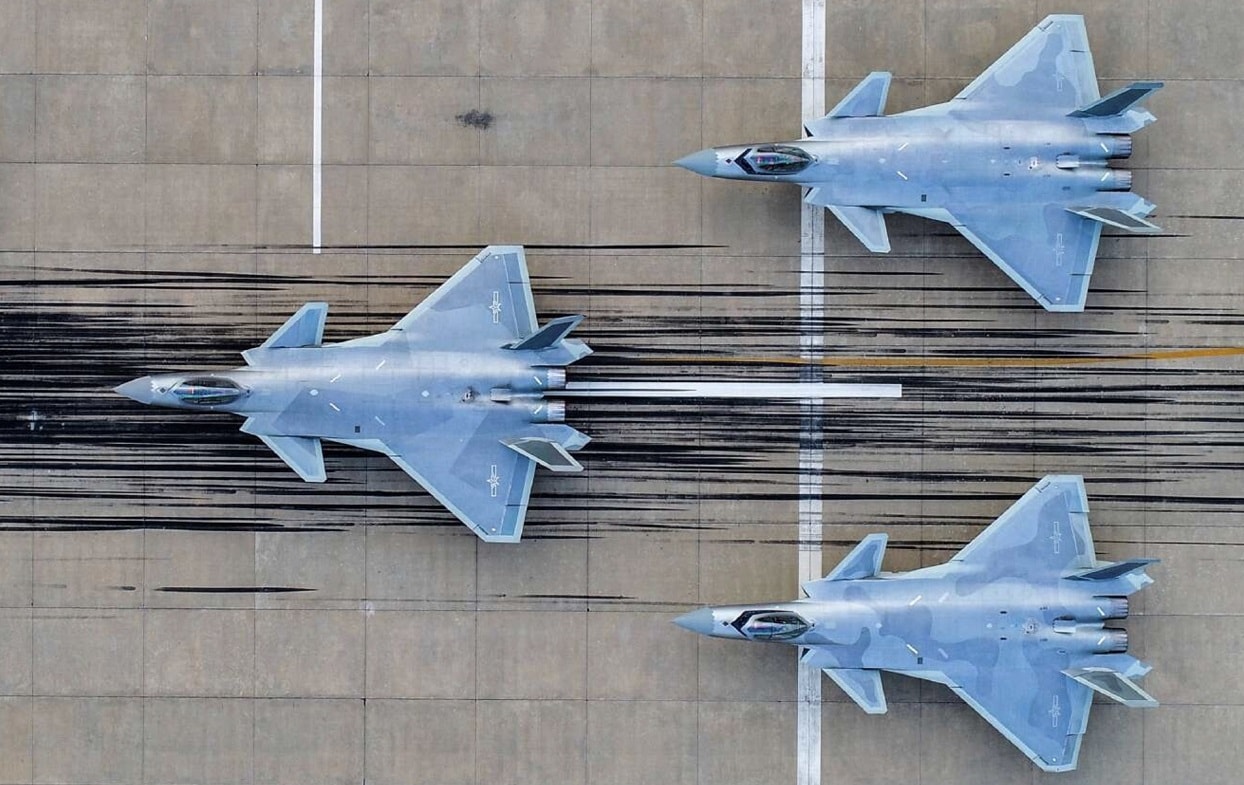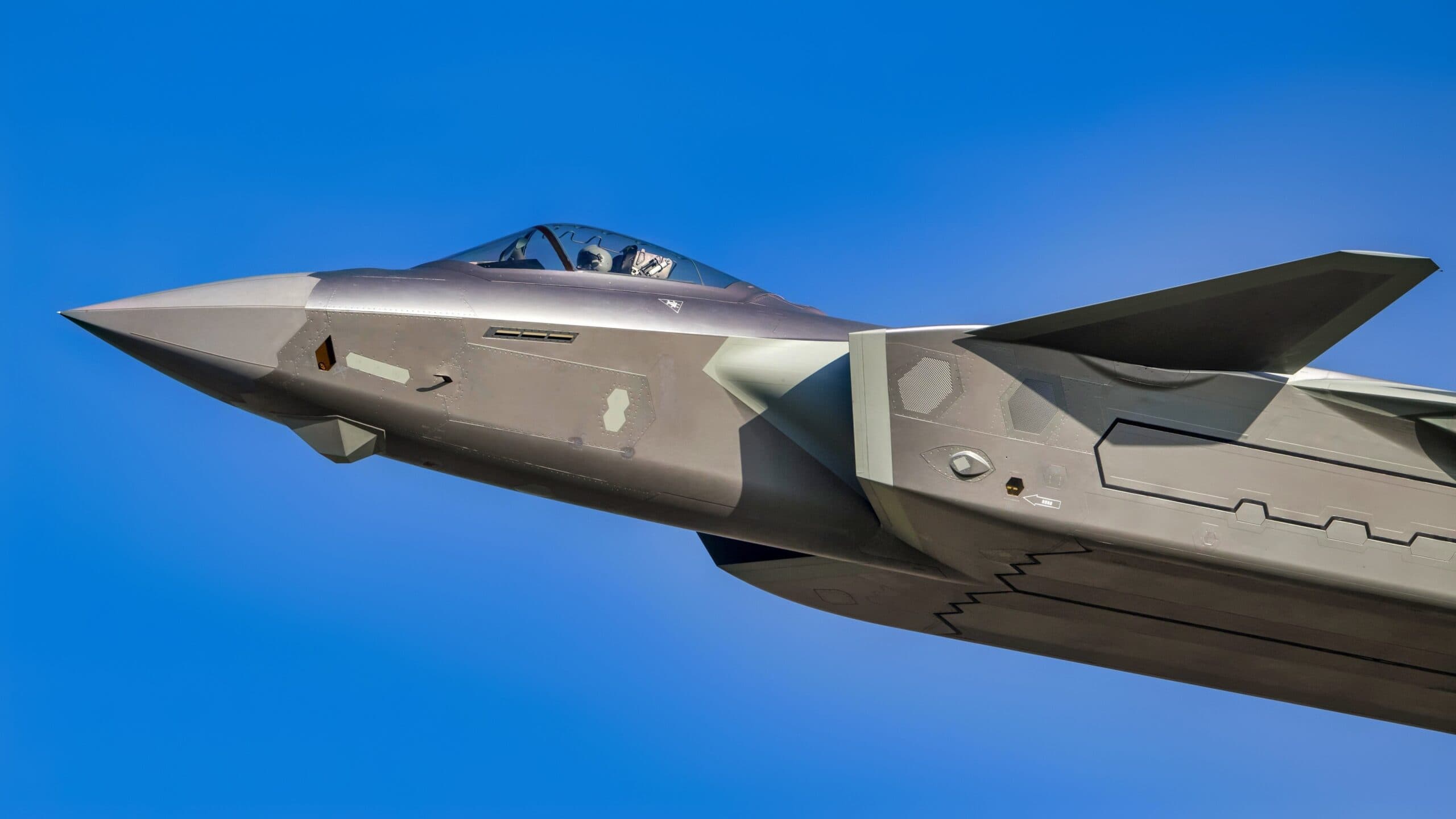Key Points and Summary: China’s J-20 Mighty Dragon, its first stealth fighter, signifies major PLAAF modernization aimed at rivalling US 5th-generation aircraft.
-Its development since the late 1990s, likely accelerated by espionage involving stolen F-35 data, produced a Mach 2 capable jet with a large weapons capacity, now using domestic WS-10 engines.

J-20 Fighter. Image Credit: Creative Commons.
-Despite these advancements and significant production numbers, the J-20 is considered less stealthy and maneuverable than the F-22 or F-35.
-While representing a substantial leap for China and requiring careful monitoring, the J-20 lacks combat proof and likely doesn’t yet match top-tier US fighter capabilities.
The J-20 Fighter Is Not Perfect
The J-20 Mighty Dragon fighter jet is China’s first warbird with stealth characteristics, although it is not believed to be as stealthy as the F-35 and F-22.
This airplane gives the country bragging rights as a fifth-generation fighter designed to engage those American fighters in face-to-face clashes.
The J-20 is an example of how modernized the People’s Liberation Army Air Force (PLAAF) has become in the last 20 years when its fighter planes mostly stayed on the ground at night or in bad weather.
J-20 Fighter: Let’s Not Over-hype It
It is important to be prudent and cautious when analyzing the J-20 and take what the Chinese say with a grain of salt.
This airplane does have a certain amount of radar evasion capabilities, and it can be a better airplane than what is currently in the arsenal.
Still, it is important not to overstate its worthiness.
The J-20 made its first flight in 2010. China had wanted a fifth-generation warplane for decades. This was to have better communication capabilities, a high level of radar evasion, a better weapons payload, and survivability in a multi-threat environment.
It Was Time to Re-imagine the Chinese Air Force
The PLAAF learned many lessons from the Americans after Operation Desert Storm. The Chinese determined that its defense forces needed a “Revolution in Military Affairs.” It wanted the ability in the first day of warfare to replicate the U.S. Air Force’s ability to conduct a shock and awe campaign with stealth airplanes clearing out enemy air defenses and then following on with conventional non-stealth fighters and bombers for ground strikes.
Time to Play Catch-Up
To start the modernization period, the PLAAF received Su-27 Flanker jets from the Soviet Union. These were fourth-generation fighters and were an improvement over the different versions of the MiG-19 that the PLAAF flew.
China still knew it was hopelessly outdated – maybe 30 years behind the United States with those obsolete fighters.

J-20. Image: Creative Commons.
By the late 1990s, what was to become the J-20 Mighty Dragon started as the J-XX program. China ended up going with the Chengdu Project 718 design by 2008.
Now, the Chinese were in business, and technicians and designers realized they could someday compete with the Americans and their stealth fighters.
J-20: Building a Fifth-Generation Fighter Is Not Easy
However, the Project 718 effort was not all good.
There were delays and long periods in which progress was slow. It took until 2010 before the Mighty Dragon had a ground taxiing test.
Then, the first flight was conducted later that year. In 2012, another flight test was successful.
It took two more years of research and development before the Chinese could declare that their design would match the Americans in radar evasion.
The updated prototype with advanced stealth features took flight in 2014. In 2019, observers glimpsed a version with yellow-coated primer. Then, the airplane entered serial production in 2020.
The J-20 originally had Russian-built powerplants, but China wanted to lessen its dependence on foreign suppliers and developed the Shenyang WS-10 engines.
J-20s do not come cheap. They may cost the PLAAF between $100 million to $120 million each. This is much more than estimates in the early 2000s when the price tag would be anywhere from $60 to $70 million.
So, the Chinese were not immune to schedule slips and cost overruns with the Mighty Dragon.
Resemblance to the F-35
The Chinese reportedly stole design information from the F-35 program through cyber espionage, and the J-20 resembles the Joint Strike Fighter.
Design features believed to have been copied are “nose cone shaping, the electro-optical targeting system (EOTS) under the nose, and side-mounted diverterless supersonic inlet intakes,” according to Simple Flying.
One pilot flies the J-20, and it can reportedly reach a speed of MACH 2.0, which is respectable for a fifth-generation fighter. The service ceiling is an impressive 66,000 feet.
Maximum weapons capacity is 24,000 pounds, and the Mighty Dragon can carry short, medium, long, and very long-range air-to-air missiles.
Despite all of the redeeming features, the J-20 is not as good as an F-35 or F-22 in my mind. Both American fighters have better stealth capabilities. The F-35 is a “flying computer” and has been extremely popular on the export market compared to the J-20. The F-22 is superior to the J-20 with the advantage in dog-fighting and maneuverability.
However, the J-20 is one to watch. The Chinese will continue to improve its stealth attributes with better coatings and reduced radar signature over time. The pilots will get more proficient with additional flights that could encroach on Taiwan’s Air Defense Identification Zone to simulate warfare.
That 1 Problem: The J-20 is not combat-proven, but it could someday make an American pilot sweat when going up against it.
About the Author: Dr. Brent M. Eastwood
Brent M. Eastwood, PhD, is the author of Don’t Turn Your Back On the World: a Conservative Foreign Policy and Humans, Machines, and Data: Future Trends in Warfare, plus two other books. Brent was the founder and CEO of a tech firm that predicted world events using artificial intelligence. He served as a legislative fellow for U.S. Senator Tim Scott and advised the senator on defense and foreign policy issues. He has taught at American University, George Washington University, and George Mason University. Brent is a former U.S. Army Infantry officer. He can be followed on X @BMEastwood.

